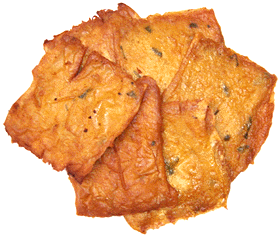...Best of Sicily presents... Best of Sicily Magazine. ... Dedicated to Sicilian art, culture, history, people, places and all things Sicilian. |
by Francesca Lombardo | ||
Magazine Index Best of Sicily Arts & Culture Fashion Food & Wine History & Society About Us Travel Faqs Contact Map of Sicily |
There is an inclination on the part of some chefs (and more than a few culinary historians) to regard "ethnic" dishes as either "aristocratic" or "folk foods." In Sicilian cuisine most foods are broadly interpreted as having always appealed to the population generally; it is only in the last few generations that stigghiola and spleen sandwiches have become "folksy." Panella is above this kind of identification. As far as we know it was widely introduced in southern Italy for mass cultivation during Sicily's Arab period, probably in the tenth century. Though ceci were more widely grown in this era, they were known from the earliest times. Cicer arietinum was originally cultivated by Neolithic man in the Middle East, India and western Asia, domesticated from a variety of Cicer reticulatum still known in Turkey, and present in the central Mediterranean during the Bronze Age. The ancient Greeks and Romans cultivated chickpeas, though probably not to the extent of the Arabs. We might draw an analogy with certain citrus fruits; the ancient Romans certainly knew of oranges, but their widespread cultivation in Sicily was undertaken by the Arabs. Falafel, hummus and other recipes call for ground ceci. Panella is made with ceci flour (or very finely ground fresh ceci), with just enough water to form a thick paste, some chopped parsley, perhaps a bit of fennel seed, salt and pepper, then fried (or deep fried) in a healthy oil blend (perhaps a mixture of two-thirds corn and one-third olive). The cakes should be no more than about a half-centimetre thick, and about eight centimetres (3.5 inches) square, thought smaller sizes are popular too. The cakes should be cooked completely but not to the point of being completely crispy, with the inside being firm but also tender. It only takes a few minutes. They are a good source of zinc, iron and other minerals and folate, as well as protein (though low in certain amino acids). Fried foods of this kind seem to run counter to the health currents of our times, but panella is a tasty temptation and it need not be fried too long to be cooked well. About the Author: Palermo native Francesca Lombardo is Best of Sicily's resident wine expert. She has written a book about Sicilian street food. | |
Top of Page |
 Finger foods are great, and almost every culture has them. In Sicily
one of the favourites is panella. These are flat fried cakes made
from the finely-ground flour of ceci (chickpeas), known in Spanish
as garbanzos. Sure, Sicilian cuisine has other tasty finger foods, including
potato croquets (crocché), but panelle are among the oldest, made
continuously since the Middle Ages. Nowadays they're sold at street side
stands, in the street markets and in the occasional restaurant. Like
Finger foods are great, and almost every culture has them. In Sicily
one of the favourites is panella. These are flat fried cakes made
from the finely-ground flour of ceci (chickpeas), known in Spanish
as garbanzos. Sure, Sicilian cuisine has other tasty finger foods, including
potato croquets (crocché), but panelle are among the oldest, made
continuously since the Middle Ages. Nowadays they're sold at street side
stands, in the street markets and in the occasional restaurant. Like